#rodnovery
Text
how tf are you homophobic/a terf if youre working with deities bro the gods are queer as fuck if i see anymore of that lgb/ fighting for biological womens rights bulshit people on my fuckin timeline imma pour some sriracha on a lemon and were gonna have a fuckin problem
#pagan#paganism#witchcraft#deity work#greek gods#aphrodite#aphrodite devotee#bastet#bastet devotee#morana#morana devotee#apollo#apollo devotee#dionysus#dionysus devotee#hellenic deities#hellenic pagan#hellenic polytheism#hellenism#kemetism#kemetic#rodzimowiercza wiara#rodzimowierstwo#rodnovery
391 notes
·
View notes
Text
slavic paganism is beautiful <3


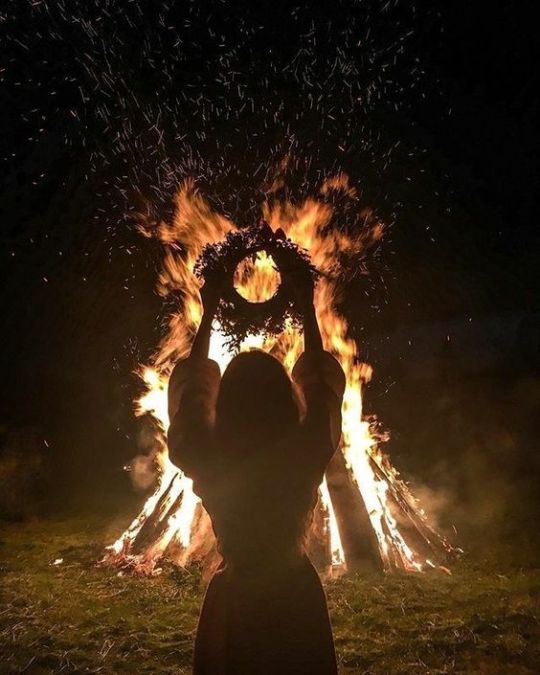

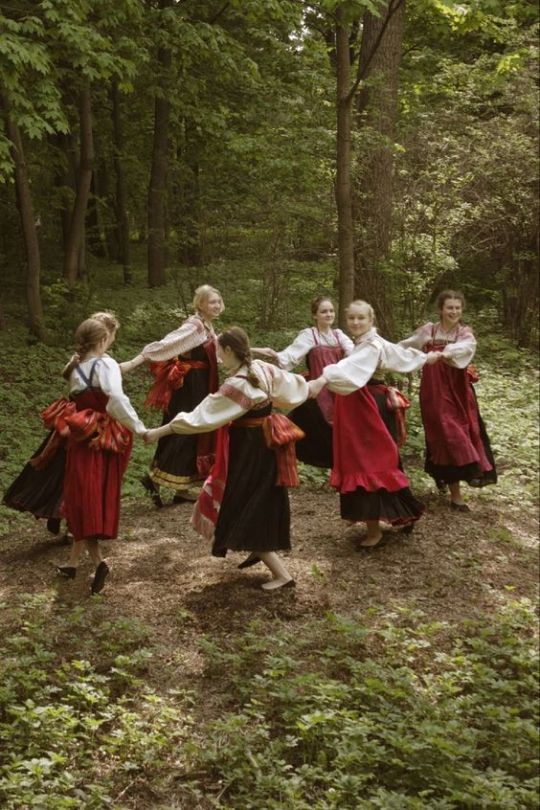

#rodnovery#paganism#slavic culture#slavic paganism#slavic witch#beginner witch#witchblr#witch aesthetic#witchyvibes#paganblr#pagan witch
271 notes
·
View notes
Text
Slavic Spring Deities (Post no.1)
Vesna and Kresnik (Vesnik)
Vesna
(VEES-nah) “Lady Spring”, “Lady of Spring Resurrection”, or “The White Maiden of May”
There are about 15 other names for this deity, the ones that I will focus on in this post in particular are:
Vesna
Name that means Spring
Derived from the Proto-Indo-European “wésr” meaning Spring.
Zlata Maja
Name means “Golden Mother of Life”
Zlatogorka
Name means “Golden Hill”
Marjetica
Name means “Daisy”
Fun fact! The daisy is also a sacred flower of the Norse goddess Freya!
She is a glowing radiant goddess, often described as having long golden hair. Vesna is also associated with the day that the Swallows return on approximately March 9th called Strinenija. At this point in the year, another goddess named Striga(Mora, or Morana) would be reborn as this Spring Goddess. The dates however, will vary depending on the climatic differences in the various Slavic countries.
She loves music, dance and song; as well as sensual pleasures (intercourse). She bedecks herself with a flower crown, and the land itself with beautiful flowers. She may be found naked dancing in a meadow, happily surrounded by birds and butterflies.
Like all the tales of Slavic Deities, she too can change her form to the animals she most connects with. These animals happen to be white birds, rabbits, or singing larks. These are also her messengers!
Quick Facts!
Does she have a sacred day? Time? Holiday?: Yes! They are Fridays, the entire month of May, and especially May Day!
Sacred Space(s): Literally; any flowery meadow, garden, or hill!
Sacred Animals: Rooks, Robins, Cranes, Mice, Shrews, Cuckoos, Fire-flies and Glow worms.
Sacred Plants: Maple, hawthorn blossoms, and wild roses.
Offering ideas: Honey cakes, flowers, apples, goat’s milk, flower crowns, bird sculptures (especially of her sacred birds).
Kresnik
(kre-ES-nik) “Living Fire”, “Lord of Spring Resurrection”, “The Lord of Life-Giving Light”.
There’s about 11 names for this Deity!
In folktales, Kresnik can transform into a bird, or really any shape he pleases; or become invisible! He rides in a golden carriage across the sky on a winged horse. We see him in Slovene folk tales wielding a “golden axe” and causing lightning.
Like his female counterpart (or in some tales she is his partner or twin), he too has golden hair (and mustache), he is bright and radiantly handsome; however he is sometimes described to have golden hands (sometimes going as far as to have golden wings).
Oh! And, he lives on a golden mountain where there grows an apple tree; but it’s not just any old run of the mill apple tree—it holds the golden apples of immortality! (Are you sick of the word “GOLDEN” yet?)
The firefly is a sacred animal to him, and I’ll let you guess why.
Quick Facts!
Sacred day, time, or holiday: Spring Equinox, May 6th, Summer Solstice (June 21 or 22), and oddly enough, December 6th and the Winter Solstice. In short, the Winter Solstice was considered his “birthday,” and then he was celebrated at the Summer Solstice with bonfires!
Sacred spaces: Hills.
Sacred Animals: Roosters, goats, red cows, bulls, bears, wolves, boars, oxen, dragons, horses, flying horses, dogs with white spots (specifically over their eyes, but any white spots will do just fine), woodpeckers, and lynxes.
Sacred Plants: Apples, yellow “corn marigolds,” grapevines, buckwheat, blackberries, red cranberries, asparagus, wheat, hay, and various other fruits.
Sacred Objects: Spoked “sun wheels”, flutes, fiddle, a golden hand (think Thanos), a winged white horse, a candelabrum, golden axe, or a club.
Offering ideas: Yellow apples, wine, cooked buckwheat, grapes, candles, incense, Frankincense, wheat sheaves, cranberries.
END POST
P.S: If you have any questions, always remember to ask them!! If I personally cannot answer it, I'll find sources that could help you out!
#slavic folklore#slavic mythology#slavic paganism#rodnovery#witchcraft community#witchcraft#witchblr#pagan#witch community#witch#pagan witch#paganism#pagans of tumblr#paganblr#witches#baby witch#beginner witch#eclectic witch#tarot witch#offerings#deity work#polytheist
29 notes
·
View notes
Text

#slavic magic#slavic#slavic mythology#marzanna#baba yaga#mara#mora#morana#morena#Mařena#kikimora#zmora#surreal photography#surrealism#folk magic#folklore#pagan#paganism#neopagan#rodnovery
70 notes
·
View notes
Text
very interesting breakdown regarding rodnovery from Scott Simpson’s Strategies for Constructing Religious Practice in Polish Rodzimowierstwo:
A purely academic reconstruction of a religion from the past is “legitimate” when it is made up of fragments which have been selected solely on the basis of the academic authenticity and reliability of the evidence. When a particular fragment had not been recovered, a scholar may always choose to simply leave that space blank without perverting the intention of the reconstruction (whether it be pottery or religion). Rodzimowiercy, in contrast, need to have a complete and functional religion in order for it to be legitimate. If the participant finds her- or himself in personal need of a Slavic marriage ceremony, then that space must be filled by something in spite of the lack of a conveniently pre-existing Pagan marriage script from, say, the Wiślanie tribe in the early 10th century. It would be a serious perversion of the religious intent of such a reconstruction to give up suddenly at that point.
the strategies Simpson describes below the cut. a very recommended reading, too, so I hope the full text will get some attention as well.
1. Direct re-enacting: faithully replicating a custom described in sources such as chronicles - which Simpson notices is rarely possible as stand-alone strategy given all the blanks and generally limited sources. the most classic of issues everyone interested in neo-paganism knows and battled.
2. De-Christianising: removing obvious Christian elements from “sacred”
folk practices - think rodnovery Kolęda removing Christian elements from a folk tradition - one that is rooted in customs predating Christianity on slavic lands, and so can be stripped back into its more “original” (and pagan) form.
3. Sacralising folklore: taking elements of “secular” folk tradition and re-framing them in religious practice - for example, elevating folk melodies to sacred songs accompanying rodnovery rituals, or adapting the circular toasting custom of passing a drinking vessel among participants of an event as a religious expression other than just a secular way of toasting common among peasants.
4. Sacralising the archaic: emphasising ancient, archaic, timeless, non-modern aspects, moods and motifs - similar to above, putting religious emphasis on things which in the past were simply common. think archeological finds regarding clothing and adaptation of everyday clothing of the past as sacred or ritual clothing for modern reconstructionist practice. another example: drinking horns and mead being chosen for religious ritual because they are seen as more authentic (incorrectly) than wine or cups which are “too modern”.
5. Sacralising the natural: emphasising that which is organic, untamed, rustic. the clear emphasis on low-tech content, everything is wood or stone or raw wool - celebrations are more likely to be felt as legitimate if they happen in the forest rather than in a bar.
6. Aesthetising: artistic embellishment of existing practice. think how focused rodnovers are on creating religious visual art, music, craft mead for celebrations, hand embroidered banners and altar cloths, representations of deities and reimaginations of symbols. this helps build a language of religious expression which for rodnovers is much more communal and reliant on members of the religion. not every member of christianity feels responsible for making religious art to be used by the religion - that task is usually fulfilled by the hierarchical structure.
7. Indigenising: localisation of ideas and practices found elsewhere. so some foreign ideas are rejected in order to maintain cohesion (for example Valentine’s Day being seen as a US tradition which does not belong on slavic lands) vs acceptance and adoption of others. the biggest example Simpson gives is the widespread usage of Internet and social media in creation of this religious belonging. or utilising fire poi in kupala celebrations.
8. Direct revelation from sacred beings (ancestors, spirits of nature, gods): If the sacred beings are understood as currently real, and if they have made their presence known to the Slavic tribes in the past, then they may do so now. think shamanic approaches, divination, contacting ancestors as beings with agency and influence, interpreting signs from gods.
#folklore#slavic folklore#rodnovery#slavic paganism#Strategies for Constructing Religious Practice in Polish Rodzimowierstwo
190 notes
·
View notes
Text
“Sleep is a cousin to death,” he said. “And both are mine.”
- Morozko, The Bear and the Nightingale
I think about this quote a lot…
I didn’t realize there was a book dedicated to Rodnovery and I have successfully read all three. But like… it was published about five-ish years ago, so I have found myself wanting to talk about it, but realizing it is hardly relevant anymore. It’s like being so late to the party, you missed the after party AND the 3 year reunion.
Anyway, my grandmother used to tell us stories of Morozko and the like, so it was oddly interesting to read through these books and find myself reintroduced to these topics I’ve so long forgotten.
13 notes
·
View notes
Photo



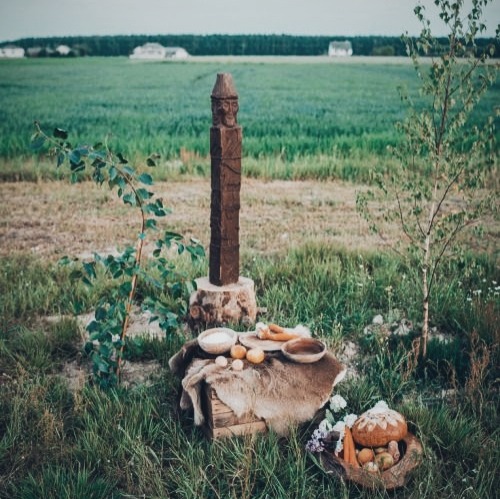




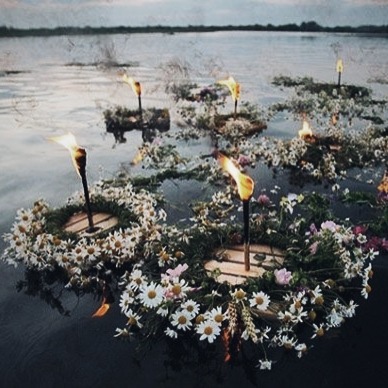
moodboard: Slavic native faith (Rodnovery)
Rodzimowierstwo słowiańskie
#rodzimowierstwo słowiańskie#slavic native faith#rodnovery#slavic neopaganism#neopogaństwo słowiańskie#poland#polish#polska#belarus#ukraine#the big country we don't talk about#slavic moodboard#moodboard#religion moodboard#paganism#pagan#pagan moodboard#slavic aesthetic#slavic#ukraina#białoruś#słowianie#słowiańskość#kupalnocka#noc kupały#kupala night#flowers#nature#neopaganism#mine
89 notes
·
View notes
Text

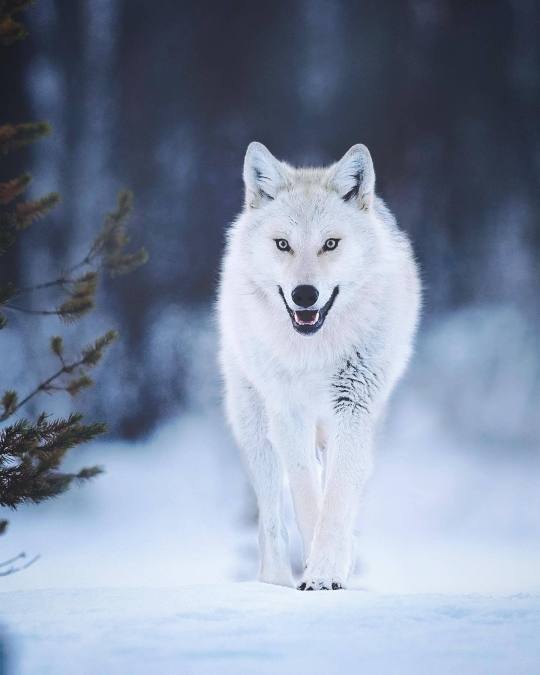
DAZBOG’S DAY
The wolf days, like similar multi-day holidays dedicated to animals are related to the cult of the ancestors. The wolf days last for a week, ending with Dazbog’s day which is also called “Rasturnjak” meaning “The scattering day”.
Rasturnjak is a day that exists in every multi-day holiday dedicated to the ancestors.The souls of the dead (which are in this case embodied in wolves) feasted, ate and drank until that day, and on that last day they had to scatter. According to beliefs, Dazbog gathers the wolves, and assigns each wolf where and how much sheep they will eat for the next year, provides them with some food for the winter and disbands them afterwards.
Deity Dazbog (Dajbog,Dabog,Dazdbog) is very difficult to explain because in the scientific community there are many different opinions. We can say that Dazbog is the Slavic god who gives life to the earth, because he is both the god of the sun (sunlight) and rain (“Dazd”) which are essential for human existence. However, he is also related to the ancesotrs as a god of the underworld (South Slavs) which may be his most important characteristic. Judging by this, gods can’t be assigned to have strict solar or chthonic principles, because one deity can be both solar and chthonic. Similar example of opposites exists within god Hors who is believed to be a god of the rising sun and the moon god.
In November, according to traditional belief, the year is divided into two parts. Solar period ends and chthonic begins. There is an interesting belief according to which, on this day, dragons can be clearly seen as they depart for the underworld where they will be spending six months waiting for the sun to regain it’s strength.
[translation from Serbian by Predrag Randjelovic]


art: this guy
7 notes
·
View notes
Text
me: do you guys have a nickname you call me?
gods: yeah
me: can you spell it out for me?
gods: *everyone is yelling the letters at the same time*
me: this shit is just gibberish please speak one deity at the same time okay? Apollo please go first
Apollo: fcorcj
me: are u sure its even a word
Apollo: yeah just search it
me: *finds an old book after half an hour and finds the meaning*
me: decoration?
Apollo: yeah :)
me: okay? Aphrodite?
Aphrodite: c / o
me: oh this is actually adorable thank you
Aphrodite: :)
me: Dionysus its your turn
Dionysus: apdedi
me: addition?... just call me a trinket man /j
Dionysus: lmao
me: Marzanna do you have one for me too?
Marzanna: yeah:)
me: is it in polish?
Marzanna: no:)
Marzanna: amndcp
me: a cactus needle...?
Marzanna: lololol
me: be so for real do you guys see me as your cat?
gods: yeah lol
me: alright Bastet?
Bastet: hxddbe
me: is it even a real word?
Bastet: yeah but you will only find it in an old ass book lol
me: can you spell the meaning in english?
Bastet: nah :3
me: do you guys enjoy making fun of me? /j
gods: yeah <3
#pagan#paganism#witchcraft#deity work#greek gods#aphrodite#aphrodite devotee#bastet#bastet devotee#morana#morana devotee#apollo#apollo devotee#dionysus#dionysus devotee#hellenic deities#hellenic pagan#hellenic polytheism#hellenism#kemetism#kemetic#rodzimowiercza wiara#rodzimowierstwo#rodnovery#theyre laughing at me as im writing this post#i guess im their keychain now lmao#ive yet to know the meaning of the word Bastet called me#if someone knows what this means please tell me#i dont want to search old ass books#what the fuck does that mean
151 notes
·
View notes
Text
youtube
I highly recommend that all Pagans and magick practitioners watch this, whether you have anything involving Slavic practices or not. Because this applies to more than just Slavic polytheism.
Also, check out the rest of her channel if you're a bit pressed for some info about Slavic cultures! Especially her first video "What do Slavic Polytheists Believe? | Slavic Polytheism 101." That video really helped me put things into perspective easier, as English sources for stuff like this topic are difficult to get a hold of without running into problematic or questionable people/sources.
#slavic polytheism#rodnovery#kolovrot#hands of god#paganism#witchcraft#also I'm so sorry I couldn't type her name out here because it uses Polish letters I can't use on my desktop keyboard#Youtube
4 notes
·
View notes
Text
Medieval slavic warrior woman
(I love drawing warrior women <3)
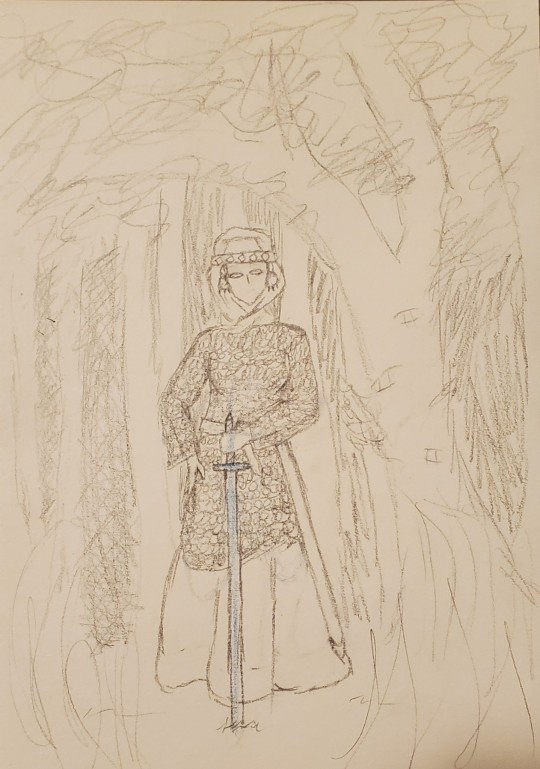
#art#sketch#traditional art#slavic#lithuania#medieval clothing#rodnovery#warrior women#slava ukraini
9 notes
·
View notes
Text
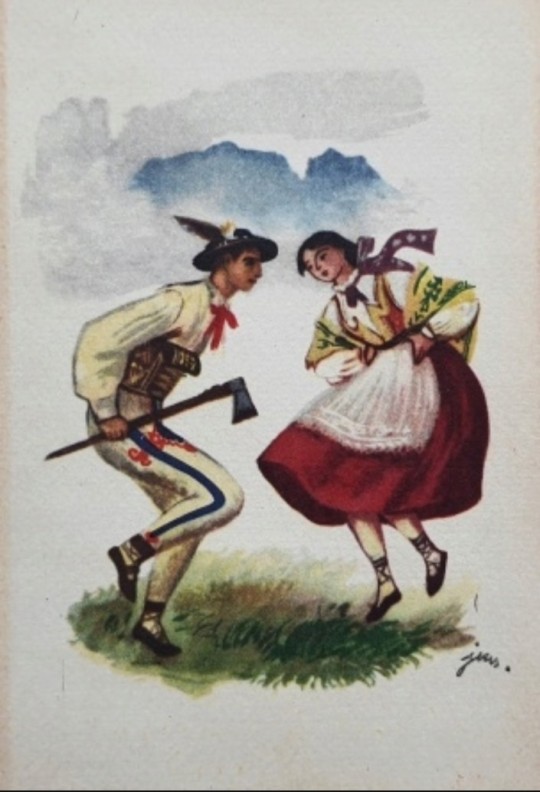
Na scynście, na zdrowie, na tyn nowy rok!
Życzę Wam wszystkim tutaj (chociaż jest Was niewielu) takiego nowego roku, żebyście przede wszystkim byli z siebie dumni. Nawet z najmniejszych rzeczy.
I wish you all (although there are very few of you here) that in this new year you will be able to be proud of yourself. Even of the littlest of things.
Autor pocztówki/author of the postcard: J. M. Szancer
#slavic#slavic paganism#rodzimowierstwo#rodnovery#slavic folklore#folklor#podhale#highlander folklore#poland#polish#new year#new years eve#talks over herbata
22 notes
·
View notes
Text

Podłaźniczka, Szczodre Gody, 2023. 💕💕💕
4 notes
·
View notes
Photo
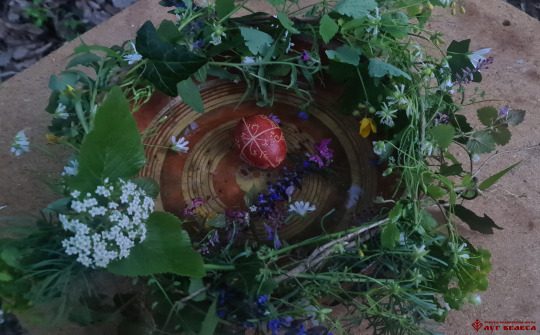








Few moments from Jariljdan* celebration held by the members of Lug Velesa.
*festival that celebrates revitalizing return of Jarilo.
#Jarilo#Jariljdan#yarilo#slavic ritual#slavic tradition#rodnovery#rodnoverje#Lug Velesa#srz lug velesa#fire#swing
118 notes
·
View notes
Text

Finding my relationship with Frija/Frigg prompting me to remember my heritage and doing ancestor work. The goddess Mokosh is very similar to Frigg… finding myself and my studies running full circle.
#frija#hearth mother#frig#goddess frigga#goddess frija#hearth magic#norse goddess frigg#heathenry#rodnovery#goddess mokosh#mokosh#mother goddess
11 notes
·
View notes
